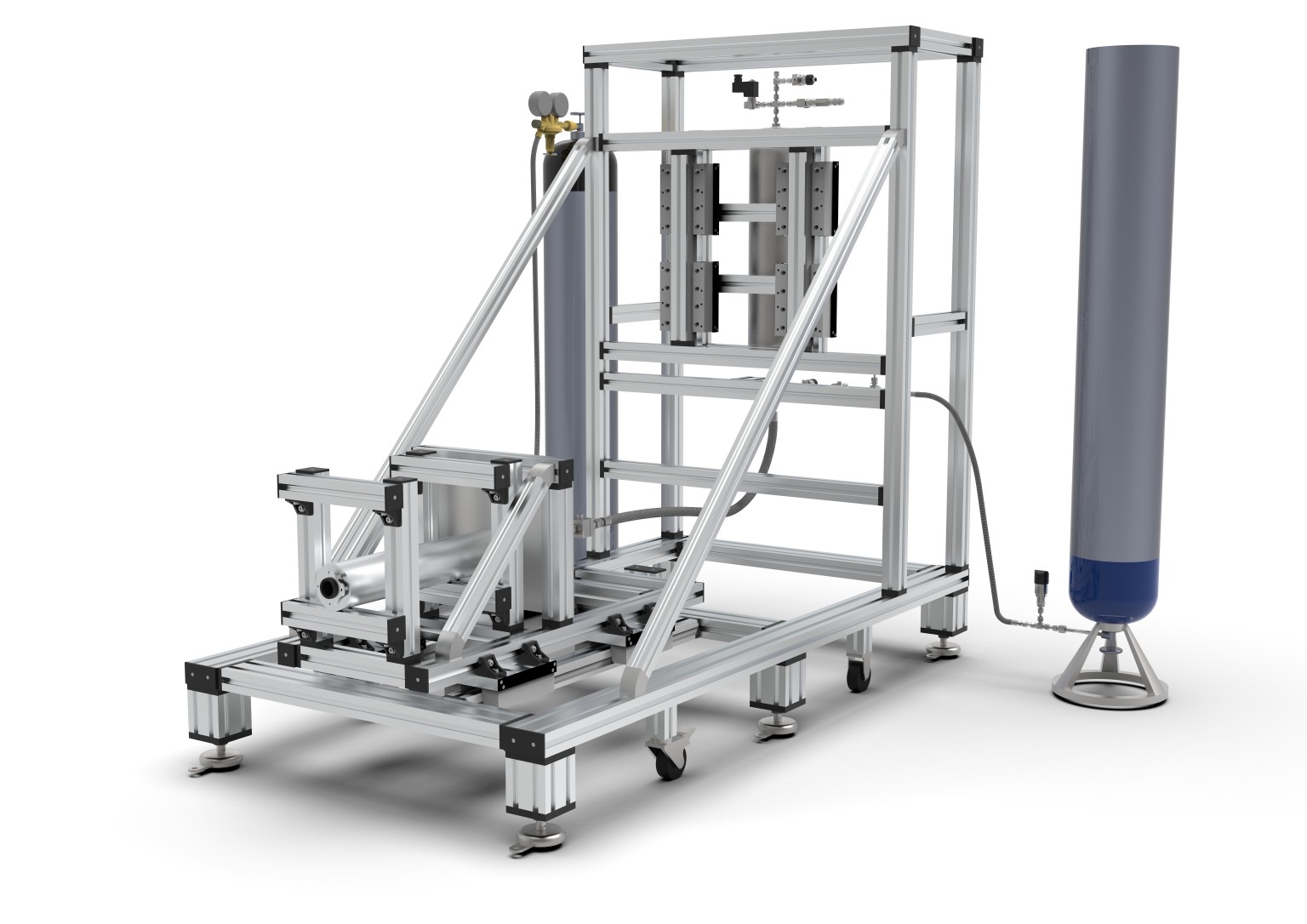
Rocket Engine Testbed
Penguin is a modular testbed for our self-developed and researched propulsion systems.
The simple construction of aluminum profiles allows the structure to effortlessly adapt to evolving engines and instrumentation.
This enables us to continuously improve our testing procedures and to quickly implement new innovations.
In addition, the system remains mobile, which allows us a free choice of location due to the easy transport.
We follow the principle: "Test as you fly, fly as you test", which means that we use the same components for our test bench as for our rocket. This means that the proven system can be integrated into the rocket without having to do major modifications.
Especially the data acquisition and control are done with the same processor, which we use in our rockets. This allows us to test software and hardware and, if successful, integrate them directly into the rocket or use the learning from the tests for progressive iteration.
Since many components are modified or completely self-developed, it is essential that we can guarantee maximum safety.
For this reason, the test stand is fully automated. In addition, several redundant safety devices and a safety protocol with hazard analysis, precautions and safety-relevant procedures ensures the overall safety of the system.

2021-2022
Total hot fires conducted: 18
Max Thrust: 10kN
Max Pressure: 100bar
Max total Impulse: 11300Ns
Max fuel in one test: 9.5kg
Total fuel used: ~150kg
During the development of the solid rocket engines for AVES and AVES II a total of 18 hot fires were conducted on the testbed.
During each test, the rocket engine was mounted horizontally on linear rails to measure the generated thrust.
In the solid configuration two load cells, two pressure sensors and various thermocouples were used as instrumentation to gather sensor data during a hot fire. In addition, multiple cameras observed and documented the tests.
2022-2023
Like all chemical rocket engines, hybrid propulsion uses an oxidizer and fuel.
The term hybrid is derived from the respective aggregate state of the two components. While oxidizer and fuel are used in liquid form in liquid propulsion systems, they are present in solid form in solid propellants.
Hybrid systems combine the states of aggregation, whereby the oxidizer is usually found in liquid form and the fuel in solid form.
By combining the concepts, the following advantages of liquid and solid rockets are combined:
Safety: Spontaneous ignition is not possible due to the local and physical separation of the chemical components.
Control: Unlike a solid motor, the oxidizer supply can be controlled and stopped at any time.
Costs: Due to its low complexity and the omission of a pump for the oxidizer, the hybrid engine is comparatively inexpensive.
Research and development: Compared to other propulsion systems, very little research has been done on hybrid engines. Especially the current developments in additive manufacturing open new possibilities.
For the hybrid propulsion system, the test stand is extended with a fluid supply system, more sensors, video monitoring and actuators such as heating mats, solenoid valves and stepper driven ball valves.